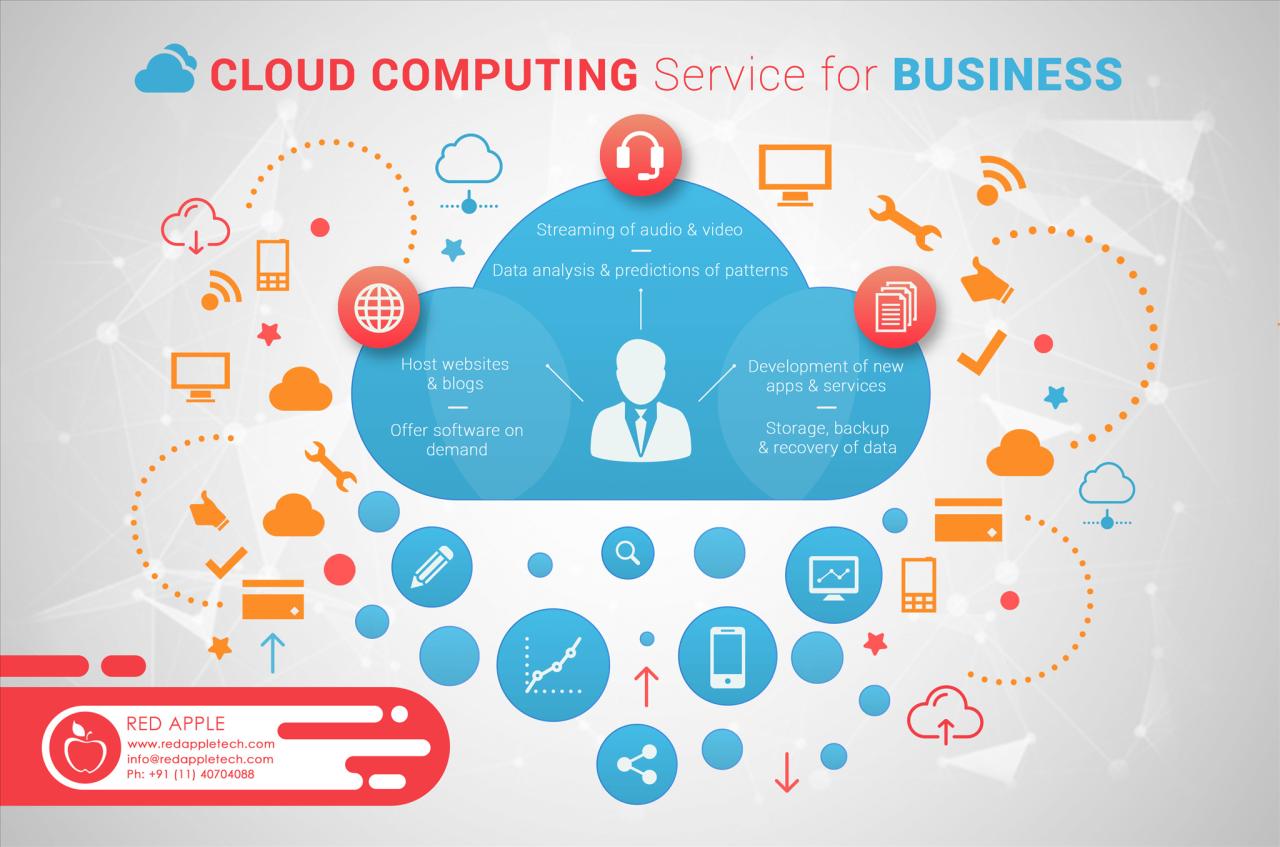Cloud computing for businesses is revolutionizing how companies operate, offering unprecedented scalability, flexibility, and cost-effectiveness. This comprehensive guide explores the core components of cloud computing, including Infrastructure as a Service (IaaS), Platform as a Service (PaaS), and Software as a Service (SaaS), detailing various deployment models such as public, private, hybrid, and multi-cloud environments. We’ll delve into the benefits of cloud adoption, crucial security considerations, and strategies for choosing the right cloud provider and migrating existing applications. Furthermore, we’ll examine cost optimization techniques, disaster recovery planning, and the integration of cloud computing with big data analytics, ultimately providing a roadmap for businesses navigating the dynamic landscape of cloud technology.
The Future of Cloud Computing for Businesses

The cloud computing landscape is constantly evolving, driven by technological advancements and the ever-increasing demands of businesses. The next 5-10 years promise significant shifts in how organizations leverage cloud services, propelled by emerging trends that are already reshaping the industry. Understanding these trends is crucial for businesses to remain competitive and adapt to the future of digital operations.
Serverless Computing’s Growing Impact, Cloud computing for businesses
Serverless computing represents a paradigm shift in application development and deployment. Instead of managing servers, developers focus solely on writing and deploying code, leaving the underlying infrastructure management to the cloud provider. This approach significantly reduces operational overhead, allowing businesses to scale applications more efficiently and cost-effectively. For example, a rapidly growing e-commerce platform can leverage serverless functions to handle spikes in traffic during promotional periods without worrying about provisioning and managing additional servers. This results in improved resource utilization and reduced infrastructure costs. The scalability and cost efficiency offered by serverless computing make it an attractive option for businesses of all sizes, especially those with fluctuating workloads or rapidly evolving applications.
Edge Computing’s Expanding Role
Edge computing brings processing power closer to the source of data, reducing latency and improving responsiveness for applications requiring real-time processing. This is particularly relevant for industries like manufacturing, healthcare, and autonomous vehicles, where immediate data analysis is critical. Imagine a smart factory utilizing edge computing to analyze sensor data from machinery in real-time, allowing for immediate adjustments to optimize production and prevent equipment failures. This immediate response minimizes downtime and maximizes efficiency, showcasing the potential of edge computing to transform operational processes. The trend towards IoT (Internet of Things) devices further amplifies the importance of edge computing, as the volume of data generated at the edge necessitates local processing capabilities.
Predictions for Cloud Computing in Business Operations (2024-2034)
Within the next decade, we can anticipate several key developments in the role of cloud computing in business operations. Firstly, hybrid and multi-cloud strategies will become increasingly prevalent, allowing businesses to optimize their cloud deployments based on specific application requirements and security considerations. Secondly, AI and machine learning will be further integrated into cloud services, enabling more sophisticated automation and data analytics capabilities. For instance, we can expect to see a rise in AI-powered predictive maintenance systems leveraging cloud-based data analysis to optimize operational efficiency and reduce downtime in various industries. Finally, the security and compliance aspects of cloud computing will receive heightened attention, with increased focus on data encryption, access control, and regulatory compliance. Companies like Amazon Web Services (AWS) and Microsoft Azure are already heavily investing in these areas, demonstrating the importance of robust security measures in a cloud-centric environment. This focus will help build trust and ensure responsible data handling within the cloud ecosystem.
Embracing cloud computing offers businesses a powerful toolkit for growth and innovation. By carefully considering the various deployment models, security protocols, and cost optimization strategies, companies can harness the full potential of cloud technology to streamline operations, enhance efficiency, and achieve a significant competitive advantage. The future of business is undeniably intertwined with cloud computing, and understanding its nuances is paramount for success in today’s rapidly evolving digital world. This guide serves as a foundational resource for businesses of all sizes seeking to leverage the transformative power of the cloud.
Cloud computing offers businesses significant advantages, boosting efficiency and scalability. Understanding the evolving landscape is crucial for optimal utilization, and exploring the latest innovations is key to staying ahead. To gain insights into these advancements, check out this article on Cloud Computing Trends Shaping the Future , which will help businesses make informed decisions about their cloud strategies and maximize their return on investment.
Ultimately, leveraging cloud computing effectively requires continuous learning and adaptation.
